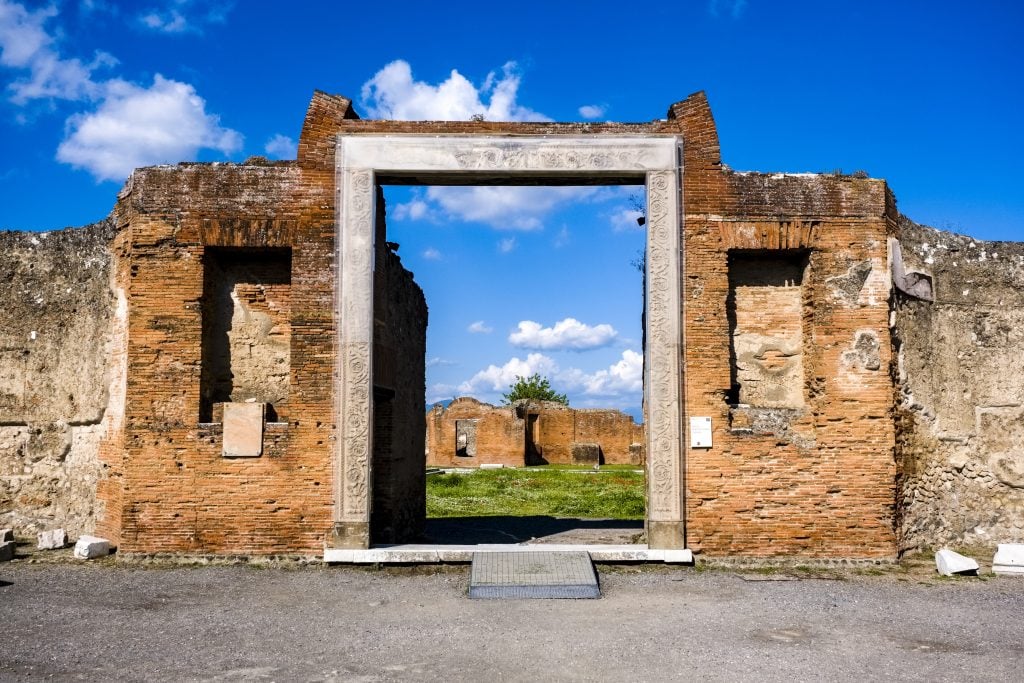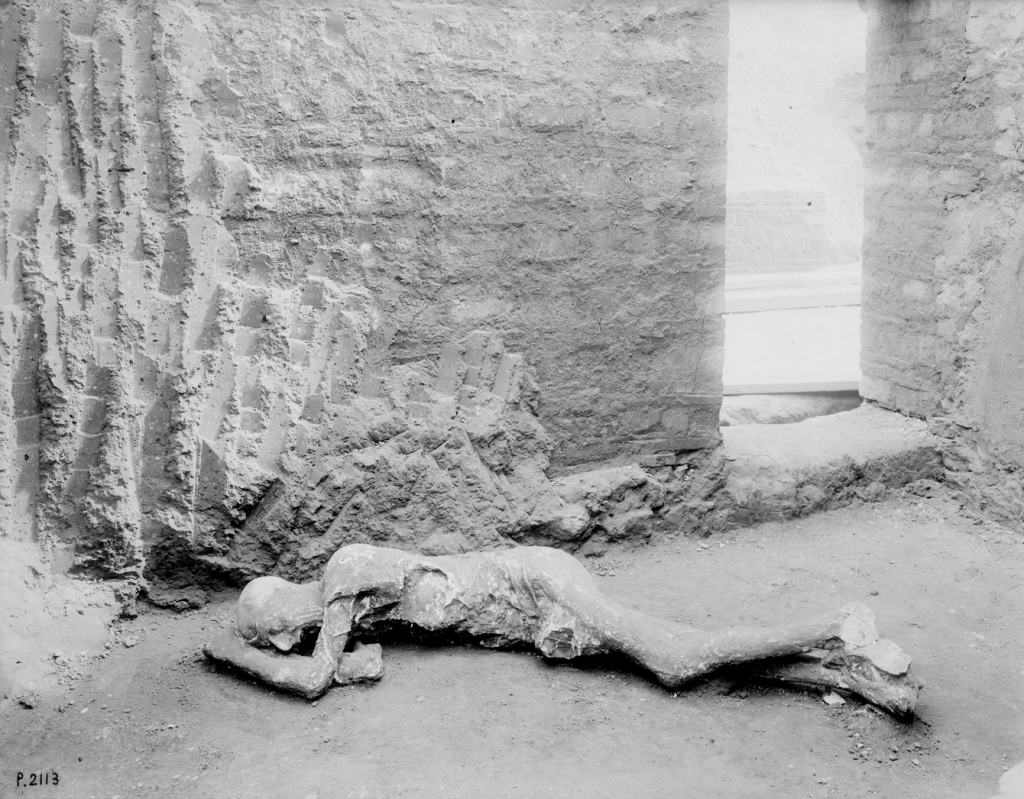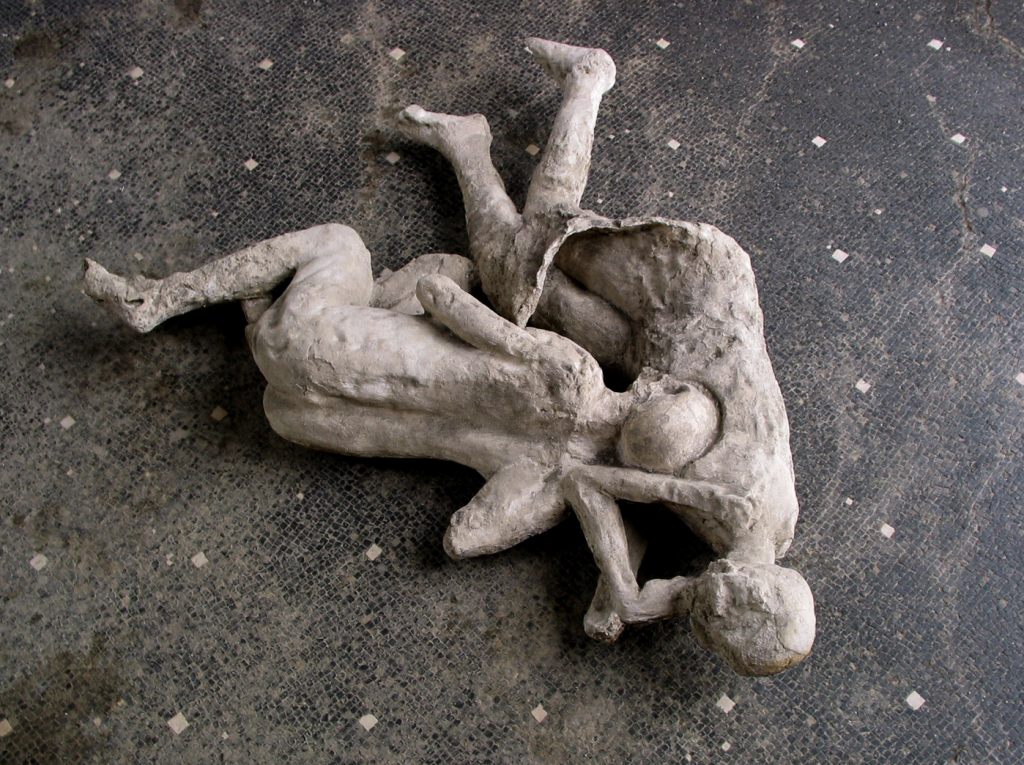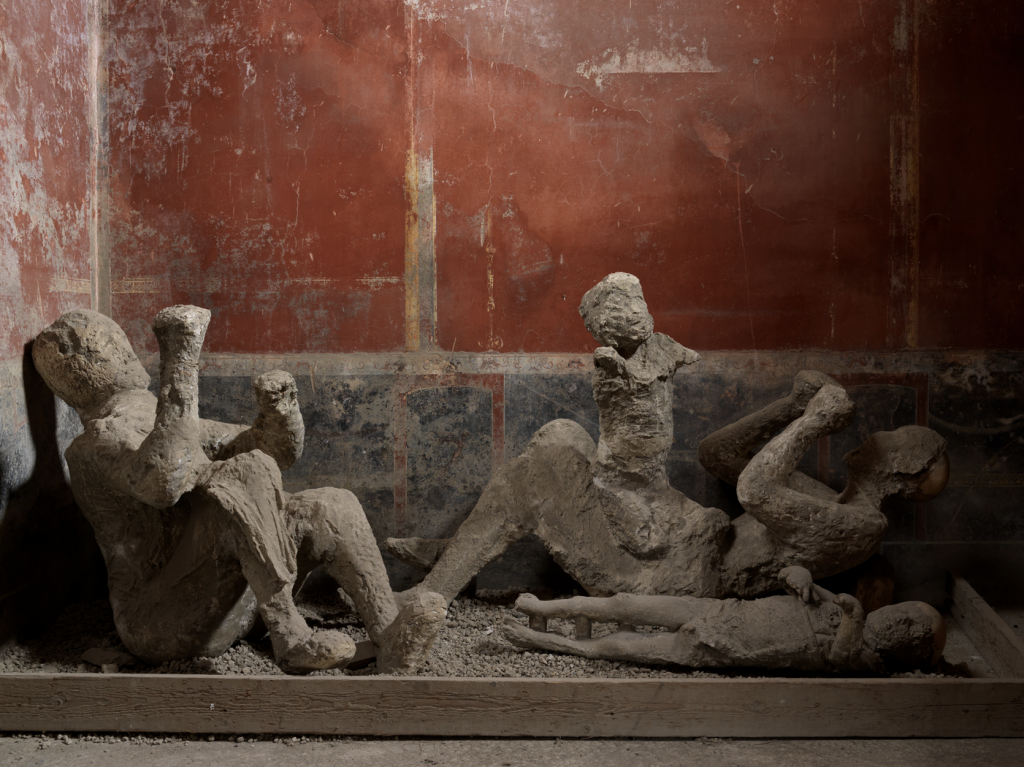Archaeology & History
New DNA Testing of Pompeii Victims Just Shattered Long-Held Beliefs
The shocking new revelations pave the way for Pompeii's real stories to emerge.

The shocking new revelations pave the way for Pompeii's real stories to emerge.

Vittoria Benzine

Researchers just shattered centuries’ worth of fantasies surrounding Pompeii with a single study. Eighteen genetics and biology experts from across America and Italy have conducted DNA testing on casts of people who perished in Mount Vesuvius’s historic eruption of 79 C.E., as Pompeii suffered several days of ashen rain, lava flows, and earthquakes. Their results, which emerged yesterday in Current Biology, debunk long-held beliefs about the people who experienced this disaster.
Pompeii was uncovered in 1599, when architect Domenico Fontana came upon its ruins amid an infrastructure project. Legend has it that Fontana covered up the discovery because he found certain frescoes too explicit. Proper excavations began only in 1748. An inscription unearthed in 1763 identified the site.
The ancient city continues to fascinate, thanks to the human stories still surfacing from its remains even today (in addition to the unexpected structures and mesmerizing murals that the site still yields). In the 1800s, archaeologists started bringing those stories to life, immortalizing the catastrophe’s victims by making casts of their bodies. Hundreds of these exist, many containing biomatter. They are often exhibited to illustrate the narratives that well-meaning experts have invented and projected onto them.

A cast from Pompeii’s Villa of the Mysteries. Photo: Alissa Mittnik.
Researchers have conducted DNA testing on other human and animal remains from Pompeii over the years. But the new study marks the first time anyone has conducted such tests on the casts.
“We sampled from 14 plaster casts which were undergoing restoration and from which we could easily remove bone samples embedded in the plaster because they had prior damage,” Harvard geneticist Alissa Mittnik, the study’s leader, told me via email. “We were particularly interested in these individuals as well, because some testable narratives had been previously proposed for their identities and relationships. In the end, five of the individuals provided us with usable genomic data.”

The purported sisters from the House of the Cryptoporticus. Photo: Alissa Mittnik.
Those five figures included an adult who perished with a child in their lap in the House of the Golden Bracelet. For decades, experts considered the duo a mother and child. DNA testing, however, revealed the grownup was a man, not biologically related to the child. Two embracing victims discovered in 1914 were previously believed to be female relatives. Here, DNA testing determined that at least one was a genetic male.
“All Pompeiians with genome-wide data consistently derive their ancestry largely from recent immigrants from the eastern Mediterranean,” researchers added, “underscoring the cosmopolitanism of the Roman Empire in this period.”

Casts of Pompeii victims in the so-called House of the Golden Bracelet. Photo: Alissa Mittnik.
The paper noted that these revelations show “how modern assumptions about gendered behaviors may not be reliable lenses through which to view data from the past.”
Although Mittnik mused to the Daily Mail that some of these mistaken figures were perhaps servants and slaves, she emphasized that “We don’t want to propose new stories that might also misrepresent these people’s lives.”
“Perhaps with technological advances and more scientific analyses,” she said, “we will be able to say more.”